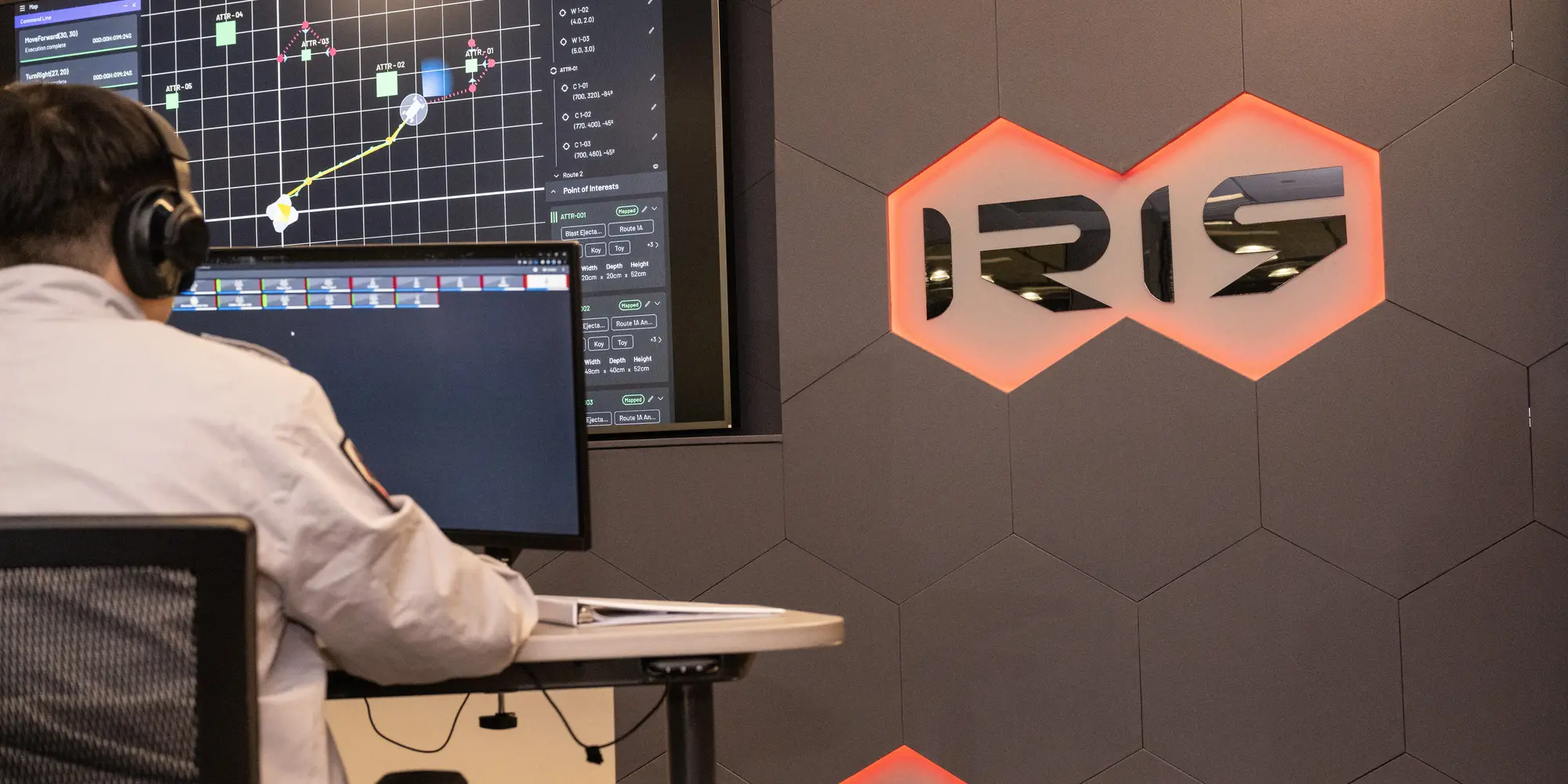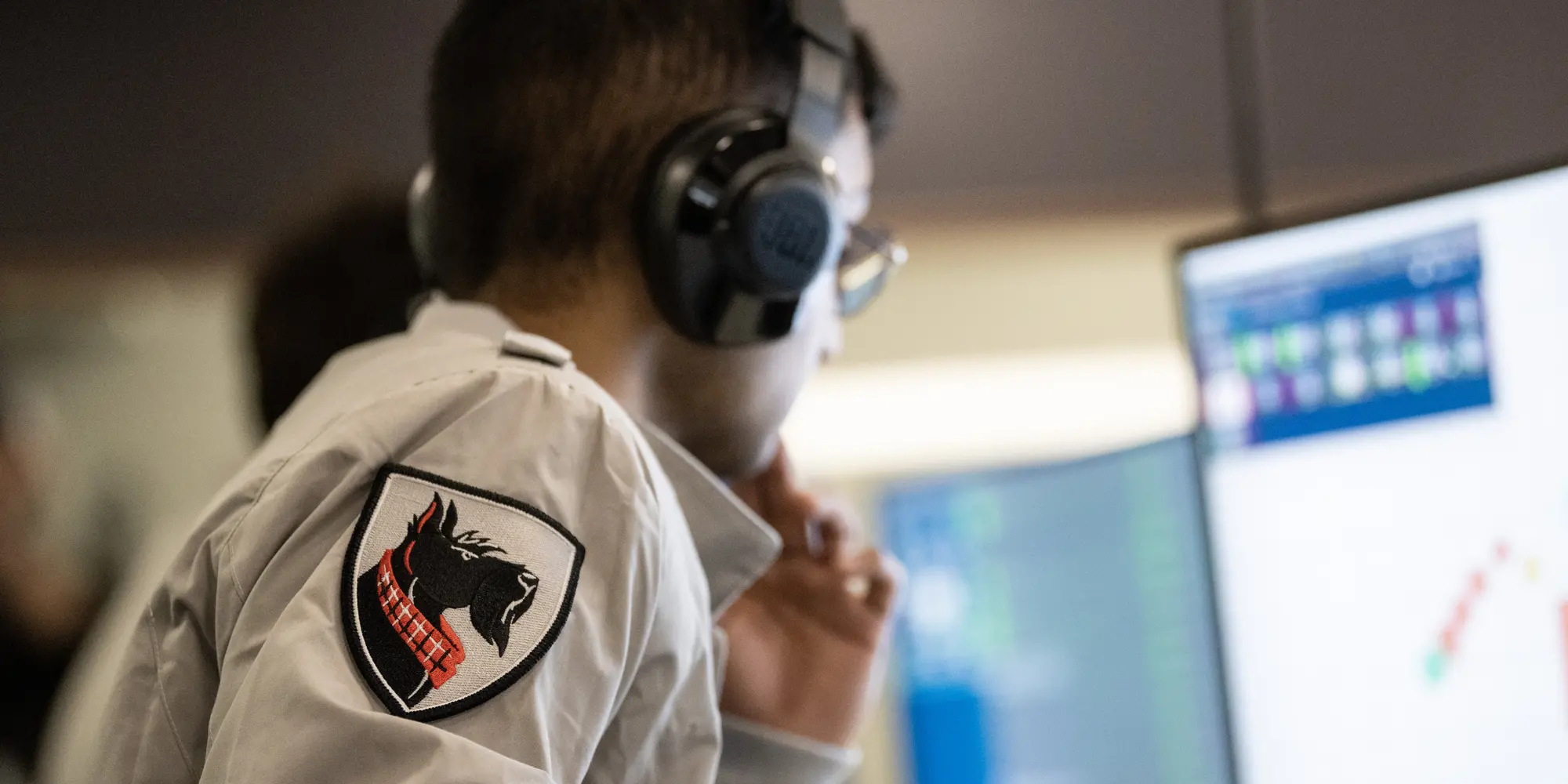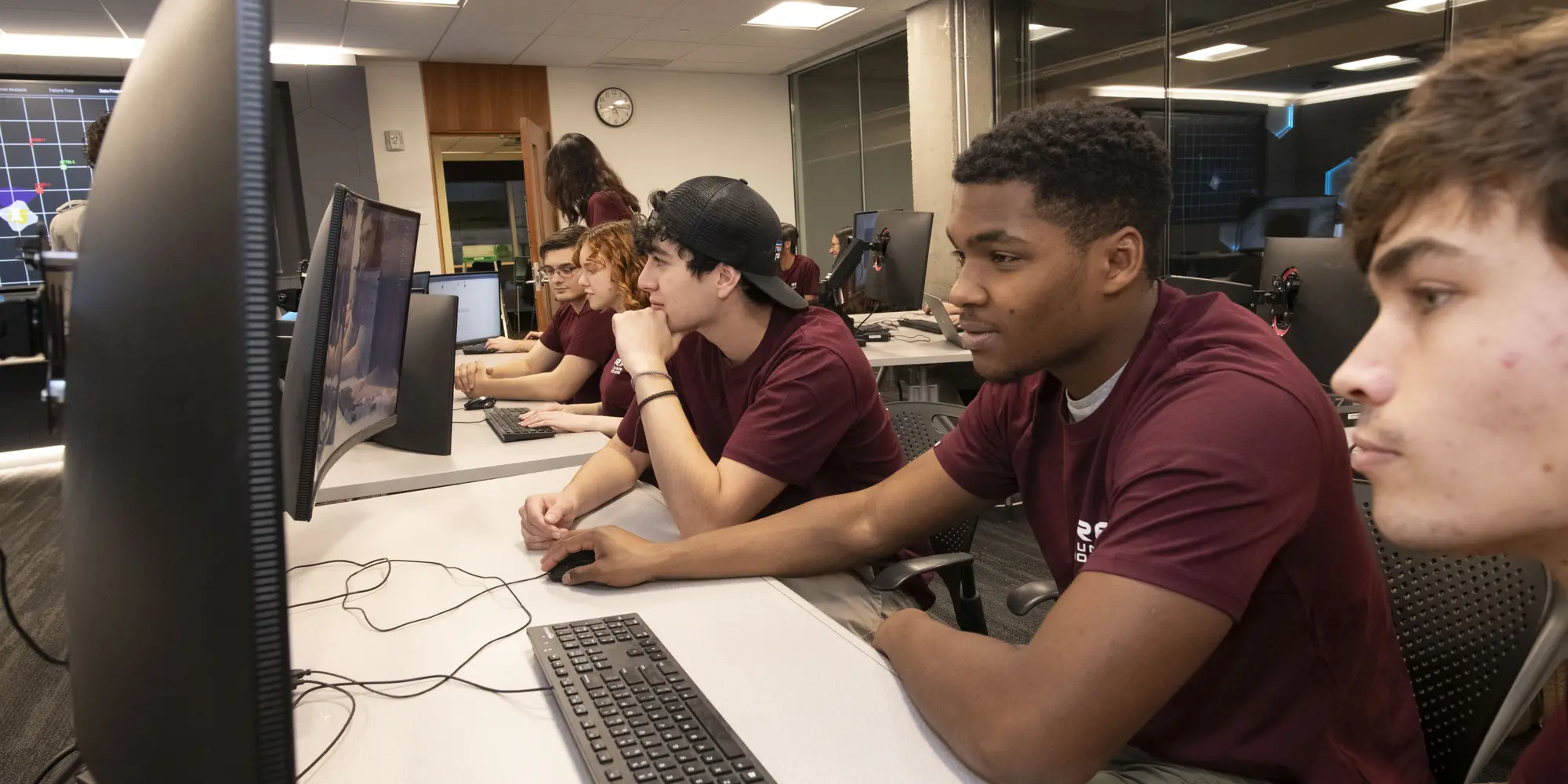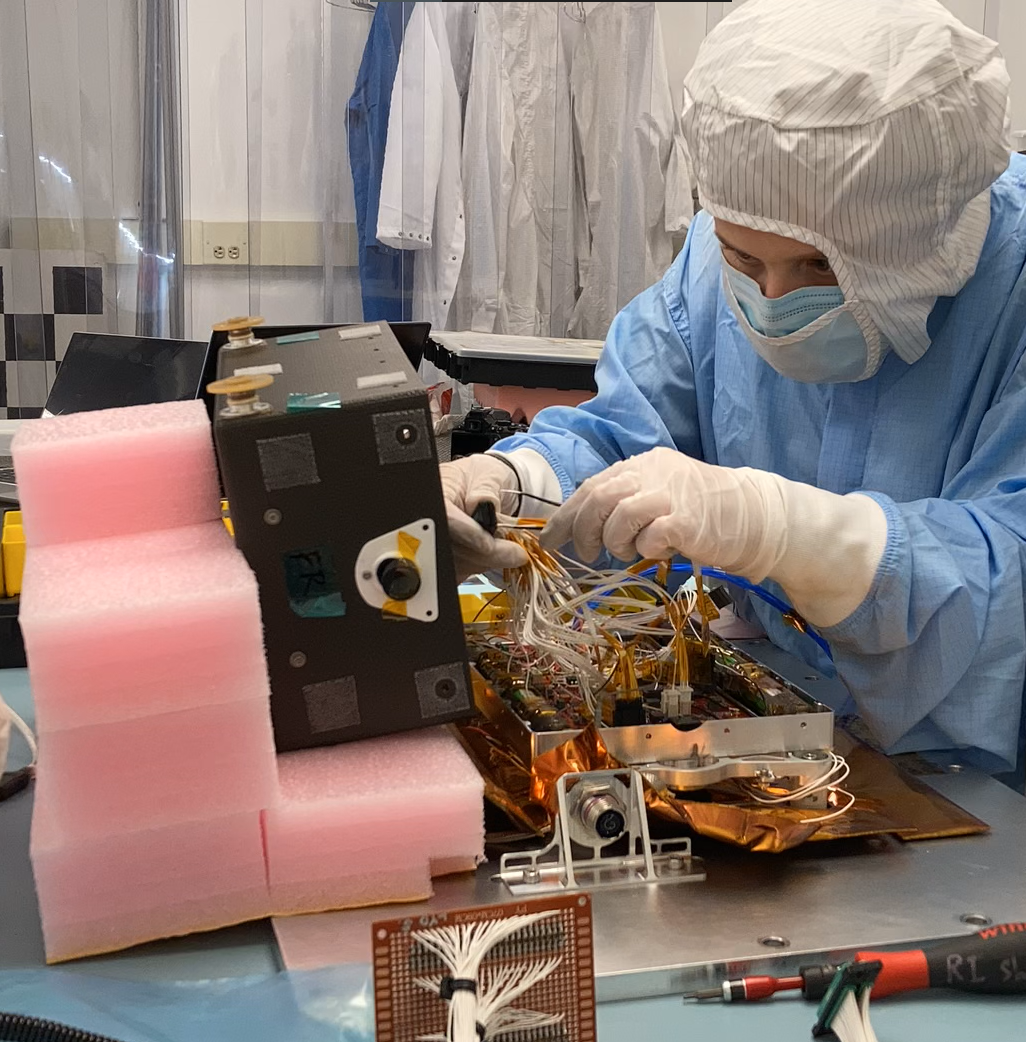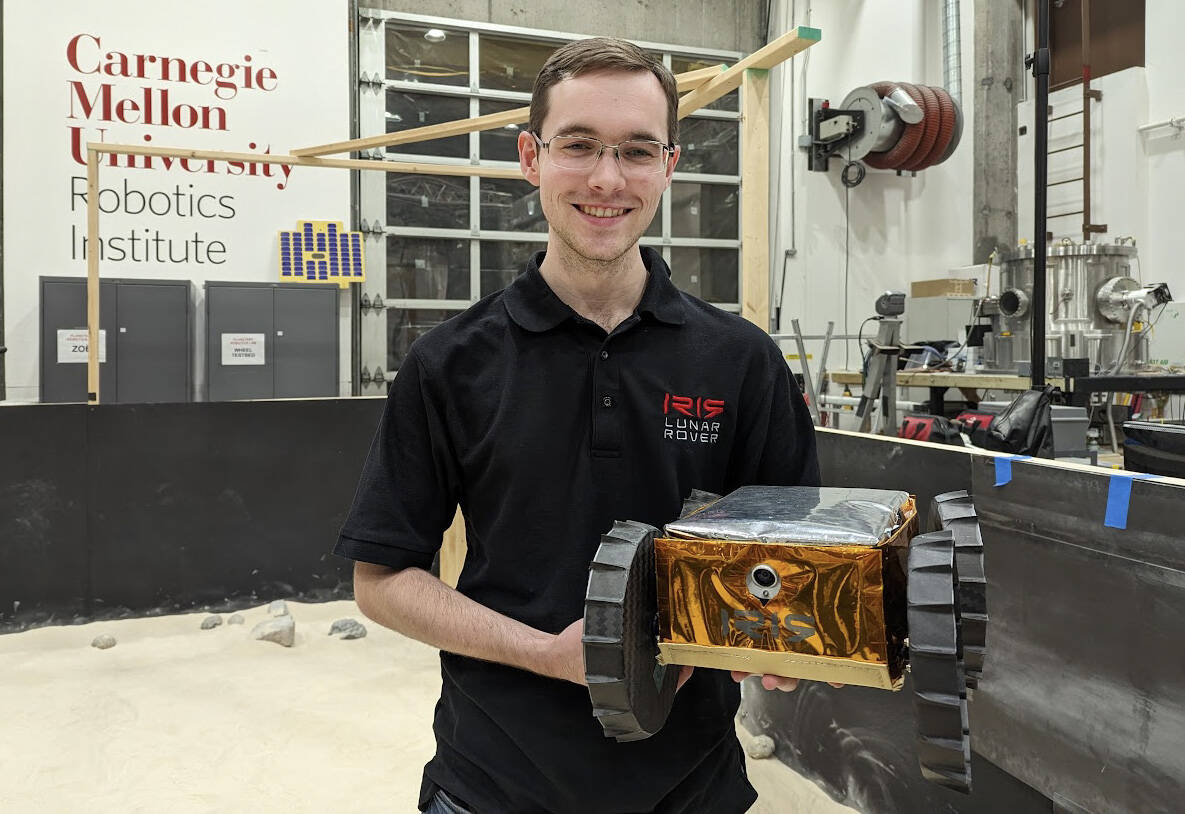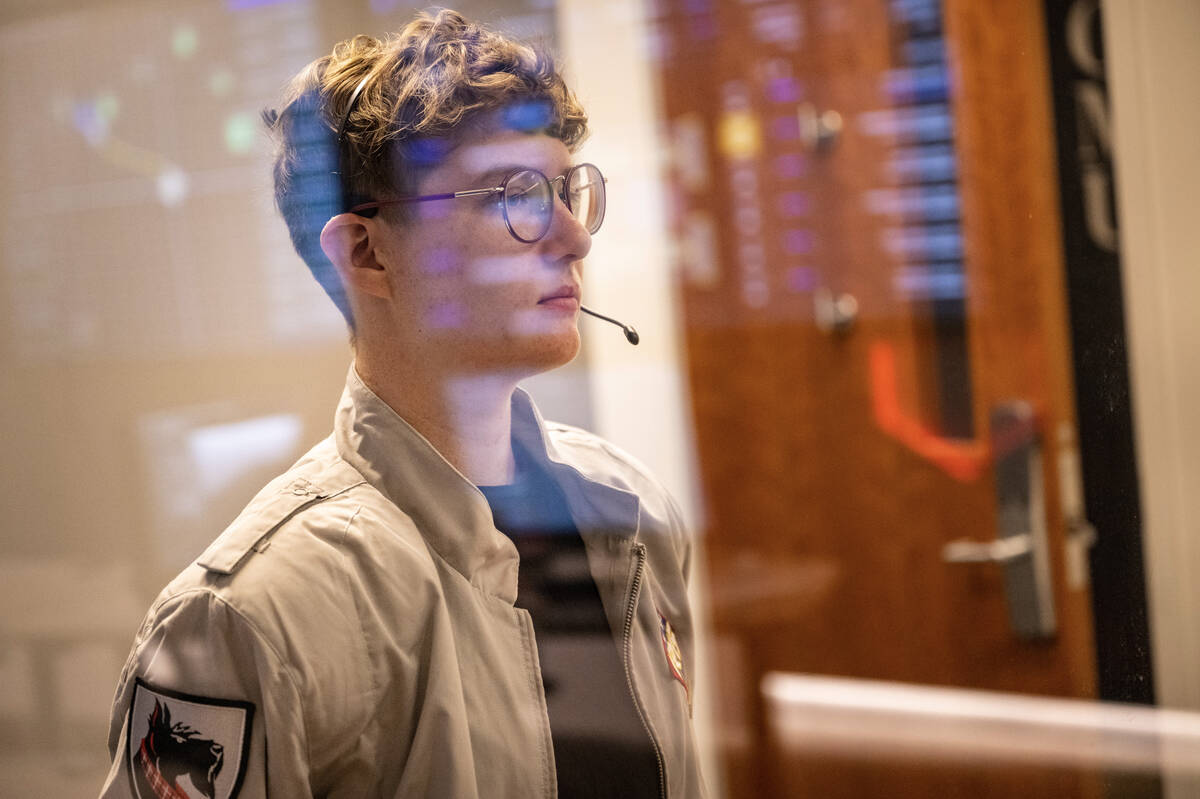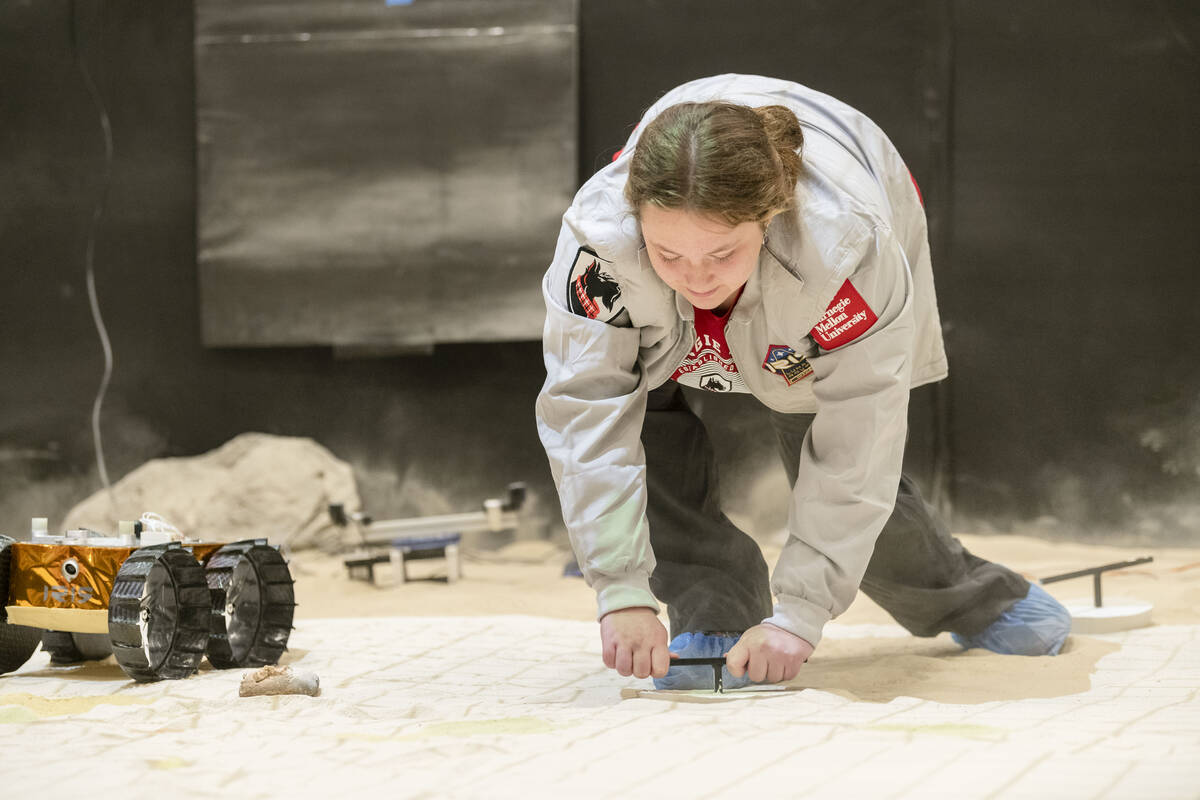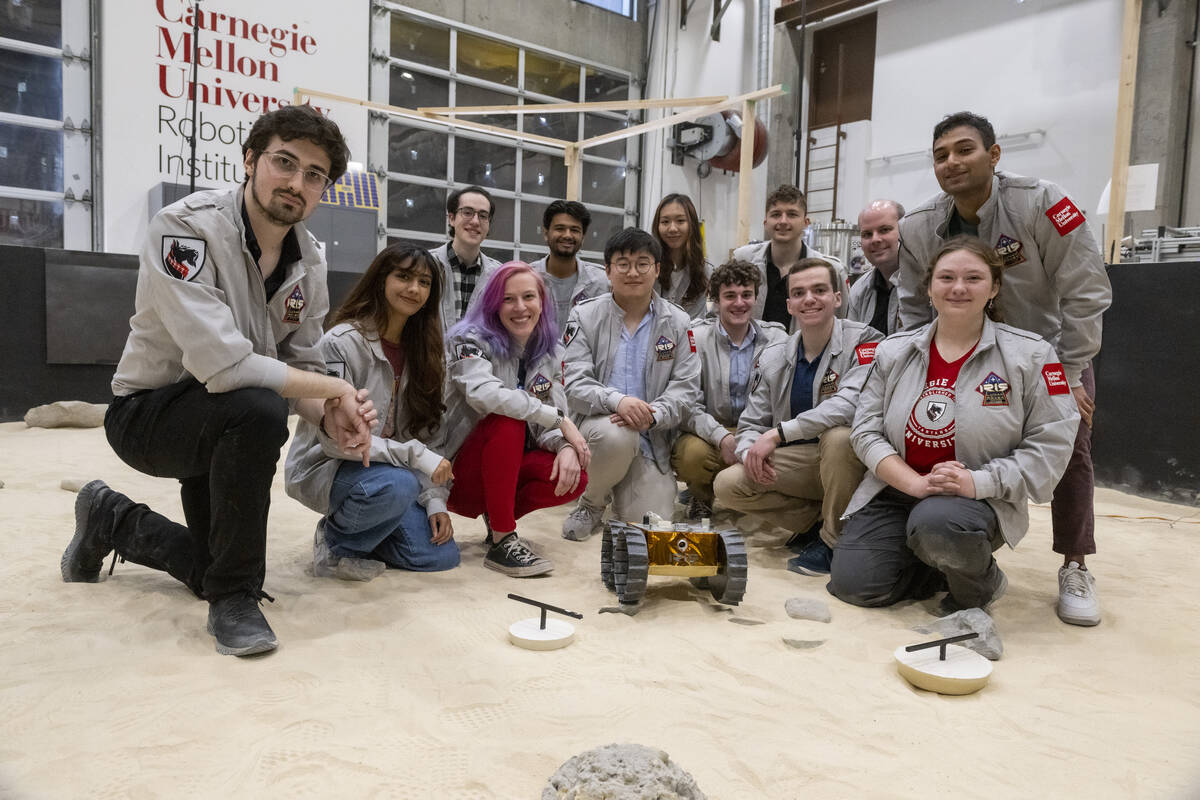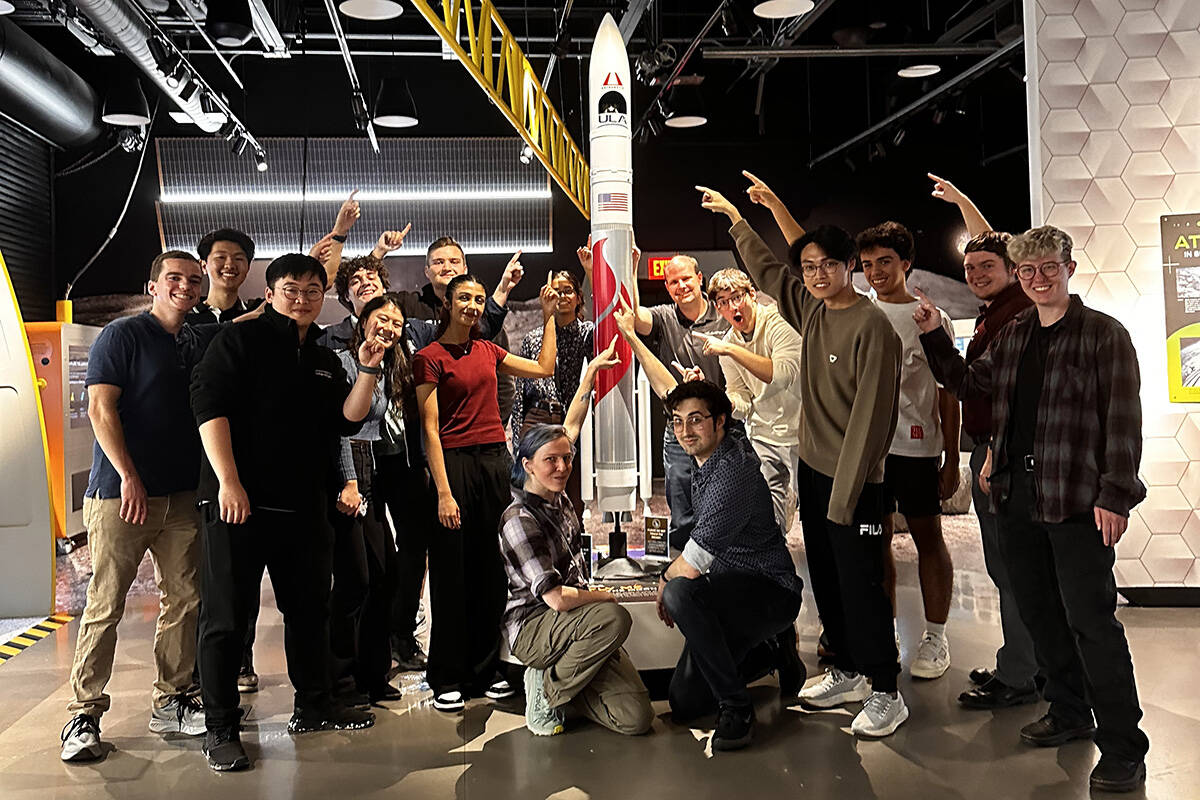All Seven CMU Colleges Collaborate to Send Iris to Space
Student engineers, computer scientists, statisticians and entrepreneurs — and a clarinet player and a mermaid — joined together to send a Carnegie Mellon University rover to the moon.
Over the life of the Iris project, hundreds of students from all seven of CMU’s colleges joined the interdisciplinary effort to make Iris the first American and student-developed lunar rover. On Jan. 8, Iris left the Cape Canaveral Space Force Station in Florida as part of the payload of the Peregrine lunar lander, built by CMU-spinout Astrobotic, aboard United Launch Alliance’s Vulcan rocket. While a propulsion anomaly with the lander will ultimately prevent the Peregrine and Iris from landing on the moon, it was an incredible learning experience for the students.
“As a child, I always dreamed of becoming an astronaut,” said Kevin Fang, a senior majoring in business administration(opens in new window) in the Tepper School of Business(opens in new window) with an additional major in computer science from the School of Computer Science(opens in new window). “This project reignites that childhood spark of working on a project that will be recorded in history books.”
Fang joined the Iris team after spending time working on MoonRanger, an autonomous rover that will search for buried ice at the moon’s South Pole. Following this, he led an engineering team working on lander deployment mechanisms and conducted lunar surface viewshed and slope analysis for the PRISMRanger project, the predecessor to current-day pit exploration rover initiatives. On the Iris project media team, he assisted with livestream broadcast planning, mission simulations, and ran the Iris merchandise shop(opens in new window), designing pieces for sale.
“We could be the first American robot on the moon! I didn’t just witness it, I worked on it. That’s me in the mission control(opens in new window) room — something that could only happen at CMU. Being able to witness the launch and full mission has been an incredible experience,” Fang said.
Others across the university joined the Iris mission after seeing a flyer or receiving recruitment emails. An important detail: No experience was necessary.
“Space always intrigued and interested me, but I never planned on doing a space engineering program. I thought you’d need some kind of prerequisite knowledge just to be a part of something like this,” said Ruth Peter, a student in the Heinz College of Information Systems and Public Policy(opens in new window)’s Master of Information Systems Management(opens in new window) (MISM) program. As a mission operator working out of Carnegie Mellon Mission Control, Peter’s role was to monitor the telemetry and systems of the rover. “Maybe I don’t know a lot about space, but it’s fun being a part of it. The moment I saw this opportunity regarding Iris, I had to join!”
Caleigh Goodwin-Schoen completed her integrated five-year master’s/bachelor’s in mechanical engineering(opens in new window) in the College of Engineering(opens in new window) in 2023. She joined Iris without any background in space.
“I’m really glad I came to CMU. I don’t think there’s any other school with anything close to this scale of space robotics,” Goodwin-Schoen said. “I was glad I didn’t need experience to join. It was just hard work, dedication and creativity that let me onto the team.”
Goodwin-Schoen helped design elements of the rover, including the 3D-printed battery bracket.
“We were able to prove — with our budget and a team of students — that a rover could pass all the tests and be integrated on a trip to the moon. That’s pretty crazy. I’ll be happy, no matter what happens,” she said.
An astrophotographer and space enthusiast, Cameron Harper has always looked toward the stars. Harper was eager to join the Iris team — but as a student studying for his master of clarinet performance(opens in new window) degree in the College of Fine Arts(opens in new window), he worried his background wouldn’t contribute to the mission.
“When you’re on the clock with 10 seconds to launch and you’ve got to know when each piece moves — that’s exactly like playing in an orchestra.” — Cameron Harper
He changed his tune upon realizing the operational logistics of the team and mission were in his range.
“When you’re on the clock with 10 seconds to launch and you’ve got to know when each piece moves — that’s exactly like playing in an orchestra,” said Harper, who gave input and direction on the smooth flow of operations within mission control, and developed operational contingency plans in the event of unexpected hurdles. “Knowing how that works, how to communicate effectively and quickly, is something that feels very familiar.”
As a musician working on Iris, Harper wasn’t solo. Carmyn Talento, a senior earning their Bachelor of Science and Arts(opens in new window) (BSA) through the university’s BXA Intercollege Degree Program, chose Carnegie Mellon’s because they wanted “a truly interdisciplinary route.”
“I truly feel passionate about both things — music and physics — and what better way to live my life than to do both,” Talento said. “It’s kind of cliche, but I always love to look up at the sky and just be fascinated by the stars.”
A physicist and euphonium player, Talento was the representation lead, organizing media-related events and finding ways to make the project accessible to all audiences. They previously worked on the MoonYard team, which used a testing sandbox and duplicate rover to mimic and plan out Iris’ movements on the moon. A projector hanging over the sandbox projects the moon’s surface, and team members reshaped the sand surface to reflect rocks and craters.
“I spent my childhood looking up at the sky and wondering. This is a once-in-a-lifetime opportunity to do something out of this world,” Talento said.
Sonja Michaluk, a senior studying biological sciences(opens in new window) in the Mellon College of Science(opens in new window) and statistics and machine learning(opens in new window) in the Dietrich College of Humanities and Social Sciences(opens in new window), has focused more on Earthbound problems. As the Tartan Mermaid(opens in new window), Michaluk dons a mermaid persona to raise awareness and donations for wetlands conservation projects.
Michaluk previously worked on a team with a professor emeritus of geology from Princeton University whose studies of both Earth and lunar geology sparked her interest in space — she jumped at the chance to work on Iris mission control. Michaluk applied statistical methods to develop controlled processes to simulations that positioned the Iris mission to succeed on a landing site with limited research and images.
“As we connected with NASA, it was interesting to see how our terrain simulation processes and tools were similar to that of other robotic missions,” Michaluk said. “The excitement each person has for this project radiates off of them, and I love the collaborative atmosphere.”
This wasn’t her first foray into space. As a finalist in a 2016 Broadcom MASTERS math and science competition, an asteroid — 32634 Sonjamichaluk(opens in new window) — was named after the young scientist.
Divya Rao, a master’s student in the Applied Data Science(opens in new window) program at the Dietrich College, worked as the systems management lead for Iris since she joined the team her freshman year. Her interest in space was sparked in second grade, when she read “George’s Secret Key to the Universe” by Stephen Hawking.
“I actually want to be an astronaut. That’s my goal in the future,” said Rao. “When I think about Iris, this is exactly the kind of experience I wanted out of my college journey.”
Rao said that before launch, the Iris mission was already successful.
“Even if we were unable to launch, or we didn’t land on the moon, we’ve got this research and these processes documented. We’ve done designs that could be used as a stepping stone for future rover projects. Moreover, Iris can inspire students. It shows that you don’t have to be part of a large or established organization to put something on the moon,” Rao said. “Our group of students, from so many different backgrounds, were able to build this rover, integrate it, test it and show that it is possible. I consider that a success.”


